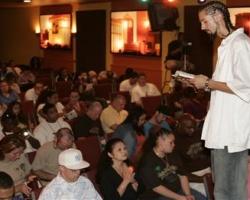Worship services may still be the USA’s most segregated hour, but fewer congregations are now completely white, finds a study comparing churches, synagogues and mosques last year with a decade ago.
Such steep change in a short period is noteworthy because “religious traditions and organizations are widely considered to be remarkably resistant to change,” says sociology professor Mark Chaves of Duke University School of Divinity, the lead researcher. “There’s movement in the right direction.”
The study, in the journal Sociology of Religion, compared 1,505 congregations in 2006-07 with 1,234 in 1998. It was based on surveys by the National Opinion Research Center at the University of Chicago. Margin of error was plus or minus 2.5 percentage points for the 2006-07 data and 3 percentage points for 1998 data.
Worship is not only more diverse, it’s also “more informal and more enthusiastic by every measure,” Chaves says, with more shouting, clapping and hands raised overhead in praise. Use of drums in worship jumped 70 percent in eight years, from 20 percent in 1998 to 34 percent in 2006-07. “We find drums almost everywhere, even in Catholic and Jewish services,” he says.




